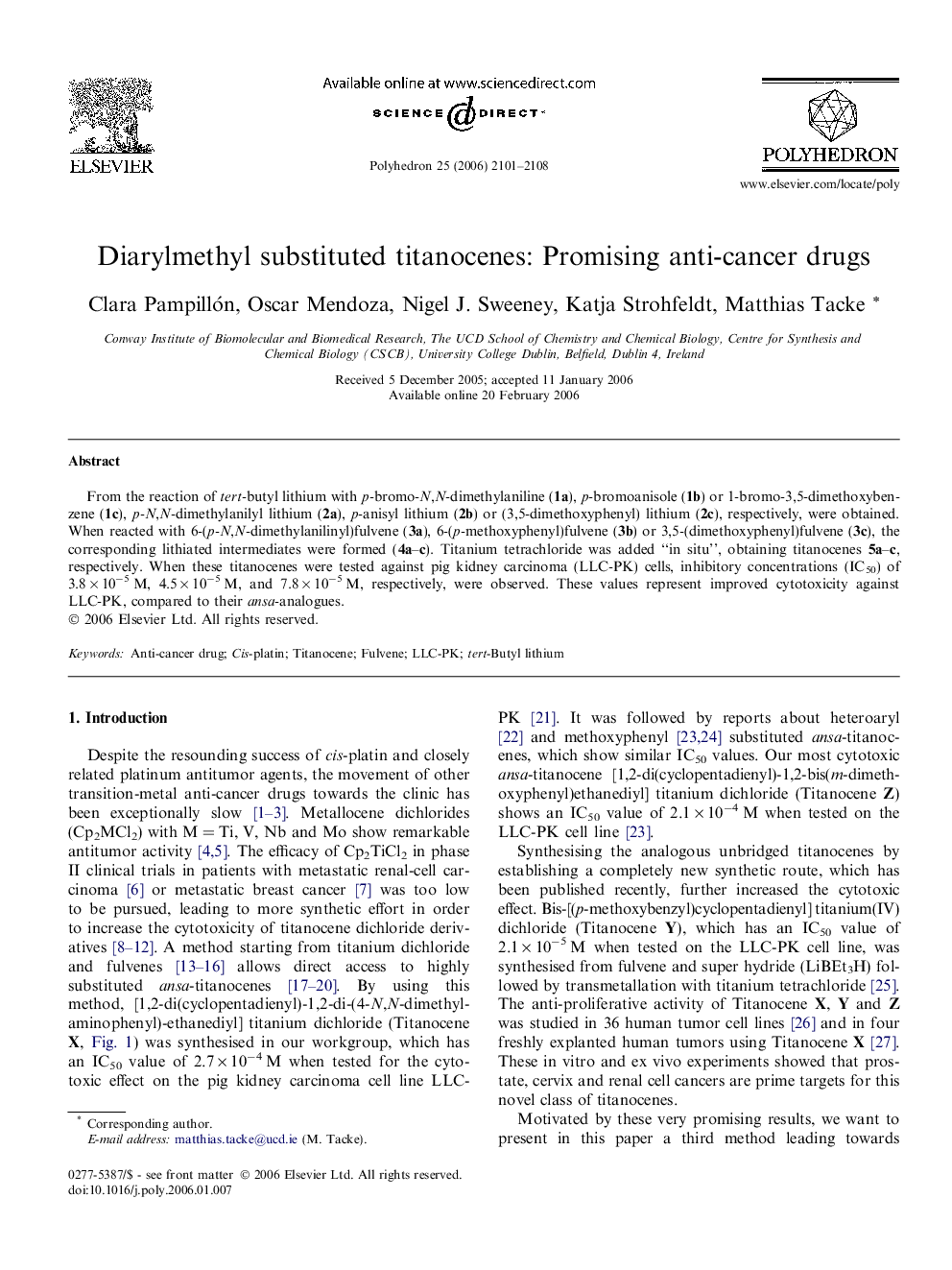| Article ID | Journal | Published Year | Pages | File Type |
|---|---|---|---|---|
| 1340288 | Polyhedron | 2006 | 8 Pages |
From the reaction of tert-butyl lithium with p-bromo-N,N-dimethylaniline (1a), p-bromoanisole (1b) or 1-bromo-3,5-dimethoxybenzene (1c), p-N,N-dimethylanilyl lithium (2a), p-anisyl lithium (2b) or (3,5-dimethoxyphenyl) lithium (2c), respectively, were obtained. When reacted with 6-(p-N,N-dimethylanilinyl)fulvene (3a), 6-(p-methoxyphenyl)fulvene (3b) or 3,5-(dimethoxyphenyl)fulvene (3c), the corresponding lithiated intermediates were formed (4a–c). Titanium tetrachloride was added “in situ”, obtaining titanocenes 5a–c, respectively. When these titanocenes were tested against pig kidney carcinoma (LLC-PK) cells, inhibitory concentrations (IC50) of 3.8 × 10−5 M, 4.5 × 10−5 M, and 7.8 × 10−5 M, respectively, were observed. These values represent improved cytotoxicity against LLC-PK, compared to their ansa-analogues.
Graphical abstractBis-[di-(p-N,N-dimethylaminophenyl)methylcyclopentadienyl] titanium(IV) dichloride is a promising candidate for an anti-cancer drug and was synthesised starting from 6-(p-N,N-dimethylanilinyl)fulvene and 4-lithio-N,N-dimethylaniline. Herein, we present the synthesis and DFT structure of the titanocene and two further derivatives followed by MTT-based cytotoxicity tests on pig kidney carcinoma (LLC-PK) cells.Figure optionsDownload full-size imageDownload as PowerPoint slide
